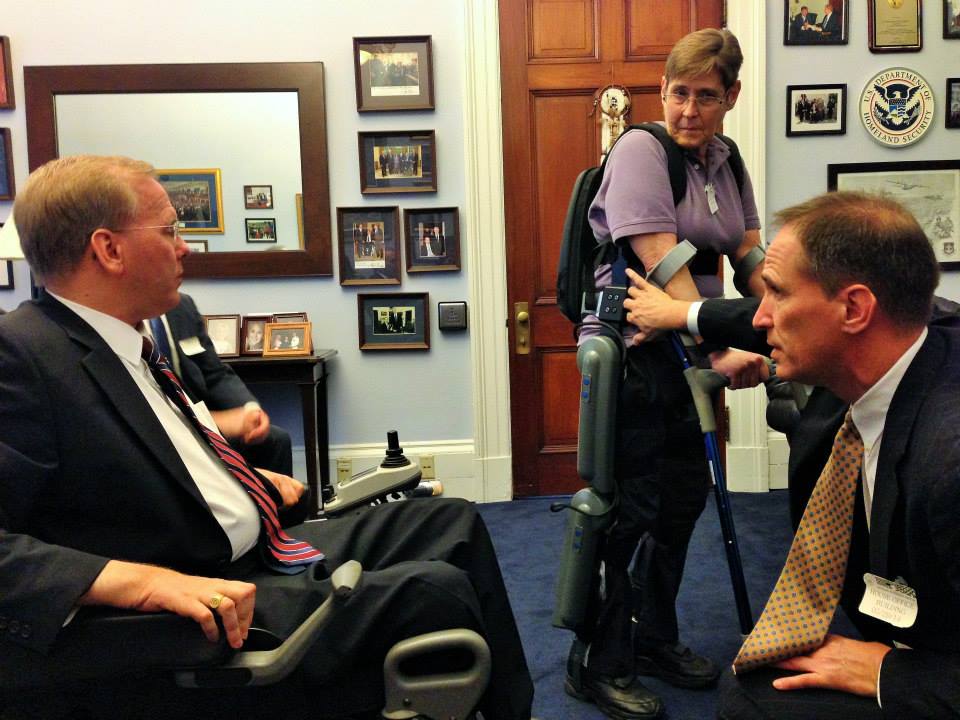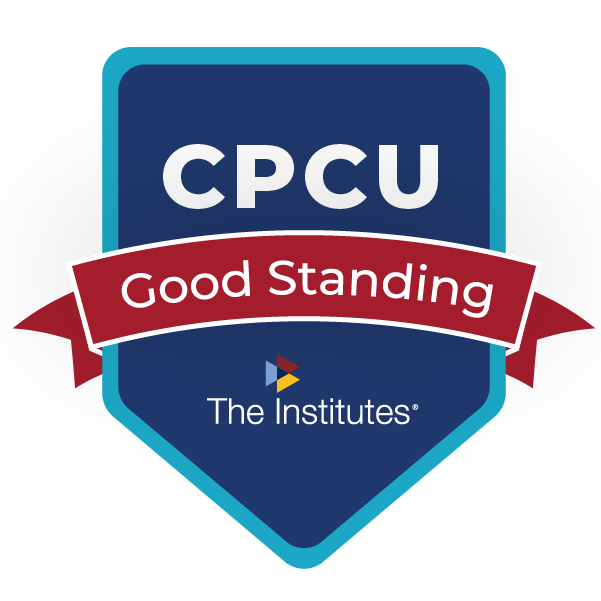2014 Reflections, 2015 Intentions
December 24, 2014 – A year ago, we prognosticated that 2014 would be “the year of the annuity” based on financial articles we were reading at the time.
Boy, was it ever!
Thanks to the faith and confidence our loyal clientele continue to place in us, 2014 was Finn Financial Group’s BEST YEAR EVER in terms of number of people we were able to help and number of structured settlement and other specialty annuities we placed on their behalf. This past year:
We helped claims associates close files while cost-effectively satisfying their obligations under the Medicare Secondary Payer Act;
We created dozens of structured settlements for minors which will help parents put their children through college;
We designed income tax-free settlement cash flows, many coordinated to work hand-in-hand with Special Needs Trusts to maximize their value, that will help catastrophically injured plaintiffs live their lives free of financial worry;
We designed and conducted training seminars and webinars for casualty companies, the CPCU Society, attorney groups and private law firms;
We helped plaintiff attorneys save money on taxes and secure their own futures by helping them structure their attorney fees;
We analyzed and evaluated options for baby boomers seeking to lock in their own future guaranteed cash flows with retirement funds and savings they didn’t want to risk losing and wrote a lot about the choices they face in The Finn Blog’s retirement section;
I personally re-dedicated myself to educational excellence with the goal of better serving my clients by earning my Retirement Income Certified Professional® designation through The American College and enrolling in the inaugural Master Structured Settlement Consultant course through the National Structured Settlements Trade Association.
All this in addition to the numerous mediations attended, consultations conducted, and questions answered combined to make this one very successful year.
We are extremely honored and grateful for the opportunities you give us to be of service.
Next Year?
So if 2014 was the year of the annuity, what does 2015 hold in store annuity-wise?
I’m so glad you asked! Look for:
Longevity Annuities – We wrote about this our July 1, 2014 Finn Blog right after the U.S. Treasury announced longevity annuities were going to be an official part of the retirement landscape. Fortune also has an article this month entitled “Why 2015 is the year for longevity annuities.”
Fixed Indexed Annuities – The Insured Retirement Institute (IRI) believes this market-linked hybrid is poised to be a “bright spot” in annuity selection during the coming year.
Widely available for those doing regular retirement planning, earlier this year we told you about an indexed-linked structured settlement and structured attorney fee option, offered by Pacific Life, available to our clients who are settling personal, physical injury claims.
Oh, there will be more. And we pledge to stay on top of it. Whatever the year, whatever your need, rest assured we’re committed to being here to help you.
“Helping people with their guaranteed cash flow needs. That’s what we’re all about.”
So as the 2014 Structured Settlement and Annuity season draws to a close, we leave you with all best wishes for a most joyous holiday season and a healthy, happy and very successful year ahead.
Happy Holidays from Finn Financial Group!
Posted: December 24, 2014 | Category: Articles, Blog, Retirement, Structured Settlements | Comments Off on 2014 Reflections, 2015 Intentions
Kim’s Story
Reprinted from our October 22, 2014 Newsletter
Structured Settlements Changing Lives
Several months ago, I shared Robin’s Story with you.
Today, I’m pleased to pass along the second in a series of first person testimonials on the benefits of structured settlements, produced by Prudential Structured Settlements.
This is Kim’s Story:
Click [HERE] for link to video
When Prudential formed the Structured Solutions Leadership Council several years back, it did so with a commitment to developing tools that would help practitioners and their clients better visualize and appreciate the important role structured settlements can play in the lives of those who benefit from them.
They continue delivering on that pledge with this video.
As a charter member of the council, I am honored to have been selected to join together with a number of industry leaders to aid Prudential with the development of these initiatives that will help so many of our clients.
Many thanks to Prudential Structured Settlements for its vision and support of the ENTIRE structured settlements, claims and legal communities. Along with the many other excellent life markets we are proud to represent, Prudential’s exceptional leadership on this particular initiative deserves special recognition.
Thank you for the opportunity to be of service and best wishes for continued success.
Enjoy the video!
Posted: October 22, 2014 | Category: Articles, Blog, Structured Settlements | Comments Off on Kim’s Story
Master Class Highlights
October 21, 2014 – Last week, I had the great honor of participating in the inaugural class of the structured settlement industry’s newest designation and will soon be able to call myself a . . .
Master Structured Settlement Consultant (MSSC)
 Offered through the National Structured Settlements Trade Association (NSSTA) working in tandem with the faculty at The University of Notre Dame’s Mendoza College of Business, this advanced Master Class curriculum was conceived as an enhancement to the existing Certified Structured Settlement Consultant (CSSC) designation created more than two decades ago.
Offered through the National Structured Settlements Trade Association (NSSTA) working in tandem with the faculty at The University of Notre Dame’s Mendoza College of Business, this advanced Master Class curriculum was conceived as an enhancement to the existing Certified Structured Settlement Consultant (CSSC) designation created more than two decades ago.
While some required post-classroom work still needs to be completed before the designation can be formally conferred, I thought I’d take a moment to share with you some of the topics covered:
A Family Affair & Settlement Needs – We heard a first person account from a plaintiff who made an amazing recovery from an accident which rendered him clinically dead and the ensuing efforts by his financial team to design and implement a complex trust which helped facilitate his recovery and protect his settlement;
The Economic Environment – A Notre Dame associate economics professor shared perspectives about the current economic conditions;
Tax Policy and Tax Policy Challenges & Tax Reform Issues in the U.S. Congress – We got a double dose of insights on tax policy from a Deloitte Director of Tax Policy which tied in nicely with the comments from Chief Tax Counsel for the Senate Finance Committee;
Taxation – Structured Settlements – We learned firsthand how the Internal Revenue Service applies Sections 104(a)(2) and 5891 tax law to situations where taxpayers seek guidance on settlements which may fall into grey areas of the law from the IRS branch chief whose office handles such requests;
Business Ethics – A thoughtful session on business ethics was led by Notre Dame Associate Professor of Management Fr. William Oliver;
Negotiation – Listening and negotiations skill techniques were shared from a Notre Dame faculty professor with advanced degrees on the topic;
The Psychology of Grief – One of the better sessions, this interactive lecture was led by a psychologist who consults with those involved in national tragedies like 9/11, Hurricane Sandy and Sandy Hook Elementary;
Life Care Planning – A Certified Life Care Planner shared insights on how life care plans are developed, modified and implemented;
Affordable Care Act – Impact of the ACA on settlements was discussed;
Sudden Wealth Syndrome – Insights from a financial planning author about some of the pitfalls that await those receiving large sums of money and how guaranteed cash flow can help avoid them.
The sessions were intense but our thirteen hour days were well spent and the curriculum content provided me with added personal insight about issues that impact the lives of the clients I serve.
Congratulations and a big “THANK YOU!” to the collective brain trust responsible for developing and implementing this very professional industry-specific educational program.
PS Go Irish!
Posted: October 21, 2014 | Category: Articles, Blog, Structured Settlements | Comments Off on Master Class Highlights
IRS on S&P 500 Linked Structured Settlement: It Works!
September 13, 2014 – Every Friday morning, when the Internal Revenue Service releases its written determinations to the public as required by law, not much fanfare is usually made of the event.
(Insert chirping crickets soundtrack here)
But with the release of Private Letter Ruling 201435006 on August 29, 2014, everyone involved in the resolution of personal, physical injury claims will want to be aware of this particular PLR and understand its implications.
![]() That’s the date the IRS publicly declared it would accord an S&P 500 linked structured settlement annuity the same tax treatment as traditional, non-indexed structured settlements.
That’s the date the IRS publicly declared it would accord an S&P 500 linked structured settlement annuity the same tax treatment as traditional, non-indexed structured settlements.
As always PLRs cannot be cited as precedent even though they are commonly viewed as very strong indicators of how Treasury will interpret existing law.
Subscribers to the Finn Financial Group e-newsletter may recall our April 16, 2014 issue which introduced our clients to a then-brand new structured settlement option being marketed by Pacific Life called the . . .
Structured Settlement Indexed Linked Annuity Payment Adjustment Rider
Fulfilling our promise made to readers at the time, the anticipated PLR is now available on the irs.gov website. (Just click the link in paragraph two)
Since we laid out the particulars of Pacific Life’s indexed option sufficiently last April, no need to go into the details again here. Just click the orange words above to read our newsletter.
Suffice it to say, though, that an S&P 500 linked structured settlement annuity, while not appropriate for everyone, can certainly fill a void in certain situations.
Case in point: Several of our clients in their fifties have already benefited from indexed annuities we placed for them using their own personal retirement funds.
Based on that success, we believe this option has unique advantages to plaintiff attorneys who structure their fees.
So don’t forget to ask for an indexed option next time you reach out for structured settlement illustrations.
Even though we’re certain traditional fixed structured settlements will still dominate the settlement planning landscape, cash flow that might increase in the future may prove too attractive to pass up for many.
Posted: September 13, 2014 | Category: Articles, Blog, Retirement, Structured Settlements | Comments Off on IRS on S&P 500 Linked Structured Settlement: It Works!
A True Independence Day
September 12, 2014 – A couple of months ago, while many of us were celebrating Independence Day grilling hot dogs and watching fireworks, retired U.S. Army sergeant Theresa Hannigan was celebrating a very different kind of independence.
She was “walking” for the first time in three years.
Confined to a wheelchair since 2011, Sgt. Hannigan became the first patient in the United States to take home a robotic exoskeleton, recently approved for personal use by the FDA, which allows her to regain much of her mobility lost to an autoimmune disease that paralyzed her from the waist down.

Rep. Jim Langevin, Congress’ only quadriplegic member and himself a recipient of a structured settlement, watches Sgt. Hannigan demonstrating ReWalk.
In my twenty-three years of helping accident victims take control of their financial lives following the settlement of their personal, physical injury claims, I have never seen anything as amazing and liberating as this.
Talk about a game changer.
As a Certified Structured Settlement Consultant, I am regularly called upon to help paraplegics, quadriplegics and other accident victims by creating structured settlement plans designed to help secure their futures and simplify their lives. Income tax-free cash flows are typically arranged to coincide with specific anticipated future medical and income needs outlined in a life care plan.
But even then, in every case, we always allow sufficient cash at settlement and/or plan for future contingency lump sums in case helpful future technological breakthroughs occur which can improve their lives.
One of those breakthroughs is finally here.
 The story of how ReWalk Robotics Ltd., the manufacturer of the amazing device which enables paraplegics and others with spinal cord injuries to stand, walk and even climb stairs, came into existence is in and of itself nothing short of spectacular.
The story of how ReWalk Robotics Ltd., the manufacturer of the amazing device which enables paraplegics and others with spinal cord injuries to stand, walk and even climb stairs, came into existence is in and of itself nothing short of spectacular.
A prototype of the ReWalk robotic exoskeleton was developed by Dr. Amit Goffer, an Israeli engineer, who imagined a better life for himself and others following an automobile accident which rendered him a quadriplegic in 1997.
Although this technology is just seeing the public light of day, Dr. Goffer began work on this system shortly after his own rehabilitation was completed. A patent for his gait-locomotor apparatus was filed in May of 2001 and fans of the television show Glee even got a glimpse of the device during the show’s Christmas episode nearly four years ago.
But the table is just now being set for it to become a mainstream reality and the future seems very bright for this technology.
 For some perspective, think about your cell phone for a minute. You know the one that takes pictures, shows movies, hails cabs, orders food, keeps you in touch with friends and – oh-by-the-way – can also be used to actually talk with people?
For some perspective, think about your cell phone for a minute. You know the one that takes pictures, shows movies, hails cabs, orders food, keeps you in touch with friends and – oh-by-the-way – can also be used to actually talk with people?
Then think about ReWalk.
If ReWalk can make the same kind of progress in the next twenty years as cell phones have in the past twenty, maybe The Six Million Dollar Man isn’t so far-fetched after all.
Posted: September 12, 2014 | Category: Articles, Blog, Structured Settlements | Comments Off on A True Independence Day
Both Sides, Now . . . and Later
 I’ve looked at life from both sides now from win and lose and still somehow it’s life’s illusions I recall.
I’ve looked at life from both sides now from win and lose and still somehow it’s life’s illusions I recall.
I really don’t know life at all.
August 29, 2014 – Almost fifty years ago, a blossoming 24-year old singer songwriter just a few years removed from her Saskatchewan homeland, wrote a song which would go on to rank, at No. 171, among the greatest songs of all time according to Rolling Stone.
Joni Mitchell says she drew inspiration for “Both Sides, Now” while on a plane reading Saul Bellow’s Henderson the Rain King and looking out the window at the clouds. But I’m not convinced she wasn’t actually reading a copy of Vaughn & Vaughn’s Fundamentals of Risk and Insurance instead.
(Stay with me. You’ll understand the connection in a bit.)
After all, insurance is all about risk management and people paying money for protection.
They pay money for a life insurance policy that promises heirs will be compensated should an untimely death occur;
They pay a lump sum of cash in exchange for an annuity which promises guaranteed future lifetime income to protect them against the risk of running out of money in old age.
But before handing over any sum of cash for something as seemingly nebulous as an insurance promise, safety minded consumers usually need a key question answered first:
“How SAFE is my money?”
In a word, “VERY!”
Even if we limit our focus to the worst financial catastrophe in recent memory, the Great Recession years of 2008-2011, you can’t help feeling secure about the safety of your purchase after considering these few facts:
FACT No. 1: According to the National Organization of Life and Health Insurance Guaranty Associations (NOLHGA), only 8 life insurers were placed in liquidation during this time.
FACT No. 2: Compare that to the 415 bank failures occurring during the same time period according to the Federal Deposit Insurance Corporation’s Failed Bank List.
Yet despite a superior track record, many people still avoid life insurers because they perceive banks to be the less risky choice. These folks, like the song says, “really don’t know life (insurance) at all.”
This is where we circle back to Joni Mitchell because one of the most under-appreciated realities of life insurer’s business model lies in how they manage their risk.
Few people take the time to realize that life insurers, quite literally, look at life from both sides, now! At least their actuaries do.
Consider this:
Every term life insurance policy is effectively a “bet” between you and the life insurance company about how long you will live.
That risk is priced according to the actuarial projections (i.e. “odds”) of you living beyond your normal life expectancy (NLE).
Same is true with annuities. Except in reverse. Here, you are betting you will “beat” the odds and live beyond your NLE.
But either way the life insurer’s chances of solvency (or, honoring their promise to you) are enhanced because they have you covered on both sides. This is a big plus for consumer security.
Think about it: For every life insurance policy that’s a “win” for them (i.e. they don’t have to pay out any death benefit proceeds) because a person lives longer than projected, there’s another person in their pool with an annuity who also lives a long life and the insurer “loses” because they are obligated to keep paying benefits.
In a way, the life insurer is “betting” on both teams where both teams win!
Extrapolate this across a large enough pool of policyholders underwritten by a highly rated life insurer with years of experience and you have a reasonably good assurance the life company will deliver on its promise.
In other words, your money is safe.
CAVEAT: Understand that this general information does not extend to every single insurer and consumers still need to do their own due diligence on the solvency and viability of any individual life insurance purchase. But as an industry, it’s got a great track record.
So whether you’re considering a structured settlement, retirement annuity, life insurance policy or any of a host of other offerings from this stable industry, remember how good your chances are.
Don’t let the clouds get in your way.
Posted: August 29, 2014 | Category: Articles, Blog, Retirement, Structured Settlements | Comments Off on Both Sides, Now . . . and Later
Structured Settlement Talk: ABA Journal’s Film Feature Misses One
August 4, 2014 – This month’s ABA Journal has a very engaging cover story about lawyers in movies guaranteed to evoke a few good motion picture memories.
Who among us hasn’t borrowed Joe Pesci’s “two Utes” line at least once?
But as much fun as “12 movies with pivotal lessons featuring lawyers” was to read, the magazine omitted one I would have liked to have seen included:
1998’s A Civil Action.
The film recounts the case of Anderson v Cryovac and the ensuing litigation over alleged leukemia-causing water contamination.
There are several important lessons for lawyers contained in this terrific courtroom drama. (“You don’t change your socks in the middle of the World Series.”)
But the scene that caught my structured settlement attention was the one where settlement discussions break down simply because the negotiating lawyers failed to fully appreciate, or even recognize, the dual concepts of present and future value.
So potent is this particular excerpt in dramatizing the subject that it has been a staple of mine for years in structured settlement training seminars I’ve conducted for lawyers and claims professionals.
Rather than recount the important scene itself again for you here, I’ll simply redirect you to an earlier post on the subject where you can can judge for yourself whether or not this film merits inclusion:
Click title: It’s Oscar Time!
If you somehow missed A Civil Action during its initial run, it still holds up very well and I highly recommend it. Robert Duvall is always hard to beat and you’ll even get to see a pre-Tony Soprano James Gandolfini featured in a prominent role.
Got a favorite movie containing lessons for lawyers you think should be included? We’re always interested in ones we might have missed so be sure to let us hear your thoughts on the subject.
Posted: August 4, 2014 | Category: Articles, Blog | Comments Off on Structured Settlement Talk: ABA Journal’s Film Feature Misses One
Annuities: The Volatility Antidote
 July 14, 2014 – 2013 was a dream year for most people invested in the stock market.
July 14, 2014 – 2013 was a dream year for most people invested in the stock market.
And with the bulls still running so far in 2014, people are left wondering just how long King Midas’ reign over Wall Street will last.
But every realist understands the bears will return someday once volatility rears its anxiety-inducing head.
This was actually supposed to be a very volatile year for stocks but so far, not too shabby.
 But we’re only at the half-way point so choppy waters could still be in the forecast.
But we’re only at the half-way point so choppy waters could still be in the forecast.
In and of itself, volatility is not necessarily a bad thing. A pretty normal occurrence from time to time, actually. And since stocks usually work out best for those with longer time horizons, most investors should still be okay in the long run.
Unless, of course, all their eggs are in one basket and they’re going to need some of those eggs to live off of.
Structured Settlements
When someone settles a personal injury claim, they are frequently offered the option of receiving some of their settlement proceeds in tax-advantaged guaranteed future cash flows designed to coincide with future needs.
You know this as a structured settlement.
Despite the many obvious advantages of structured settlements, many succumb to the allure of a stock market that most recently earned 30% and take their entire settlement in cash with visions of compounding dancing in their heads.
But what if their settlement is supposed to compensate them for their compromised work life expectancy? A bad year or two in the stock market later and they are left with fewer dollars to support themselves.
Depending on the age and individual circumstances of the client, most structured settlement professionals (including yours truly) will usually recommend a combination of structured settlement (to address the non-discretionary needs) and cash.
This is where it starts getting counterintuitive.
Those who take the time to secure their foundation with a structured settlement are actually better positioned to ride out the markets swings which take their toll on people who are not as diversified.
Because basic needs are addressed with the structured settlement, clients can actually feel confident taking on more risk in stocks with their cash and can stare down the big, bad volatility boogeyman with a good chance of coming out on top in the end.
So go ahead. Put some of your settlement aside to invest in the stock market if you like. If your time horizon is long enough, you’ve got a pretty good chance of coming out on top
Just make sure you secure your future with a structured settlement first.
Otherwise volatility might get the better of you AND your money.
Posted: July 14, 2014 | Category: Articles, Blog, Structured Settlements | Comments Off on Annuities: The Volatility Antidote
Structured Settlement Security
July 12, 2014 – In a world where security means everything and often seems in short supply, it’s reassuring to know the life companies currently offering structured settlements have all retained their “secure” ratings even throughout the dog days of The Great Recession.
And every single one of them is still going strong!
When one’s financial life is turned upside down, the memory of catastrophic financial loss can linger even after portfolio balances rebound.
Who can blame somebody for still feeling anxious about the future?
But for those with promised structured settlement payments from the current crop of life markets offering them, anxiety need not be a concern.
Structured settlement recipients have many reasons to feel secure.
Time, Money and Security
Which makes the current issue of Best’s Review, touted on its cover as “The Leaders Issue” providing its annual rankings of insurance companies in a variety of different categories, so noteworthy.
 Of special interest to us and our clients is its cover story “Standing the Test of Time” which highlights the consistency with which several life insurers have maintained an A or better rating from “the world’s oldest and most authoritative insurance rating and information source” – A.M. Best Company – for a significant period of time.
Of special interest to us and our clients is its cover story “Standing the Test of Time” which highlights the consistency with which several life insurers have maintained an A or better rating from “the world’s oldest and most authoritative insurance rating and information source” – A.M. Best Company – for a significant period of time.
Three structured settlement life markets have maintained a rating of A or better for more than 75 years (current rating in parentheses). Listed here alphabetically, they are:
Metropolitan Life Insurance Company (A+)
New York Life Insurance Company (A++)
Prudential Insurance Company of America (A+)
These three excellent markets have held their A or better ratings since 1928 and are three of only twelve companies so honored.
In the A or better for at least 50 years category, we pick up two more terrific structured settlement providers:
Pacific Life Insurance Company (A+)
United of Omaha Life Insurance Company (A+)
With A or better ratings since 1959 and 1956 respectively, these two markets have also demonstrated consistency.
Current non-exclusive providers of structured settlements that don’t make either of these lists but are also strong and remain fully committed to meeting their future obligations are:
American General Life Insurance Company (A)
Berkshire Hathaway Life Insurance Company of Nebraska (A++)
Liberty Life Assurance Company of Boston (A)
With tie-ins to major casualty companies and significant financial strength in their own right, these last three are still on our “hot” list of companies we’re proud to represent.
But the good news doesn’t stop there.
When ranked by admitted assets, half of these companies – Metropolitan (1), Prudential (2), American General’s parent AIG Life (4) and New York Life (6) – are in the Top Ten of U.S. Life Insurers.
Put it all together and you’ve got a recipe for major financial safety, security and success.
Only the best of the (A.M.) Best offer structured settlements.
With guaranteed, tax-advantaged future cash flows that are safe and secure, structured settlements have been anchoring our clients’ futures for years.
Congratulations to all our life company partners on their success. Here’s to the next 75 years and beyond.
Posted: July 12, 2014 | Category: Articles, Blog, Structured Settlements | Comments Off on Structured Settlement Security
Treasury Green Lights New Retirement Safety Net Option
July 1, 2014 – Your retirement safety net options just got a whole lot better.
Effective today, 401(k) plan participants now can choose to dedicate a portion of their retirement funds toward the purchase of “longevity insurance,” otherwise known as a deferred income annuity, in an effort to shore up their retirement security.
Here’s a good summary of what’s taken place from today’s New York Times.
These final rules now permit individuals to hedge their bet against one of the greatest risks to their retirement security – running out of money!
 Because the road of life is of unknown distance making it critical to prepare for what’s around the next turn, prudent travelers will want to make sure they pack enough money for their journey so they can pay whatever tolls they might encounter along the way.
Because the road of life is of unknown distance making it critical to prepare for what’s around the next turn, prudent travelers will want to make sure they pack enough money for their journey so they can pay whatever tolls they might encounter along the way.
It’s especially critical to make sure you have enough funds for later on down the road when other cash resources may have been used up.
Social Security helps by providing you with income you can never outlive.
Pensions, once the staple of the American workforce but now nearly extinct, do the same.
But beyond that, conventional retirement planning leaves it up to you to be smart enough or lucky enough to manage your accumulated wealth in such a way that it will sustain you throughout your retirement.
Many financial professionals recommend planning on spending down your wealth over a thirty, sometimes forty, year time period.
There’s one major problem with this approach:
You don’t know how long you’re going to live.
What if you hit the 30-year or 40-year mark and are still kicking?
Wouldn’t having a little extra “just in case” security help you sleep a little bit better at night?
Longevity insurance helps solve this problem and these new Treasury rules make it possible for you to create your own pension-like cash flows you can never outlive.
Let us know how we can help! We’re happy to assist you with creating your own safety net with any retirement funds you want to set aside to secure your future.
By allocating as little as ten percent of your funds, you can create a future security blanket that will give added assurance that you can take care of yourself in your later years.
Fad soal agat!
Posted: July 1, 2014 | Category: Articles, Blog, Retirement, Structured Settlements | Comments Off on Treasury Green Lights New Retirement Safety Net Option



















